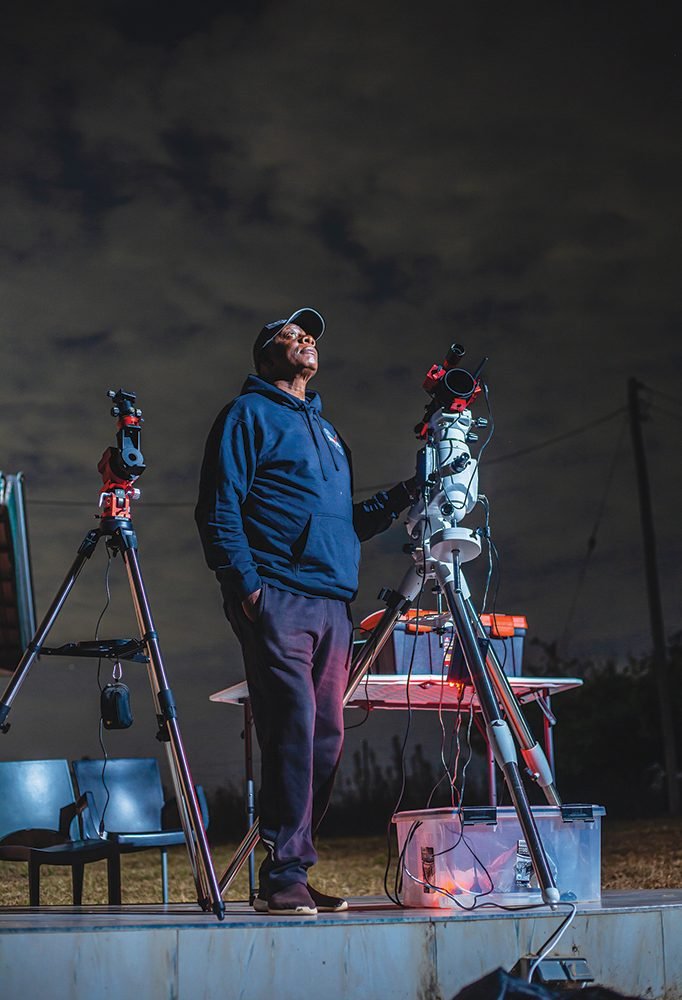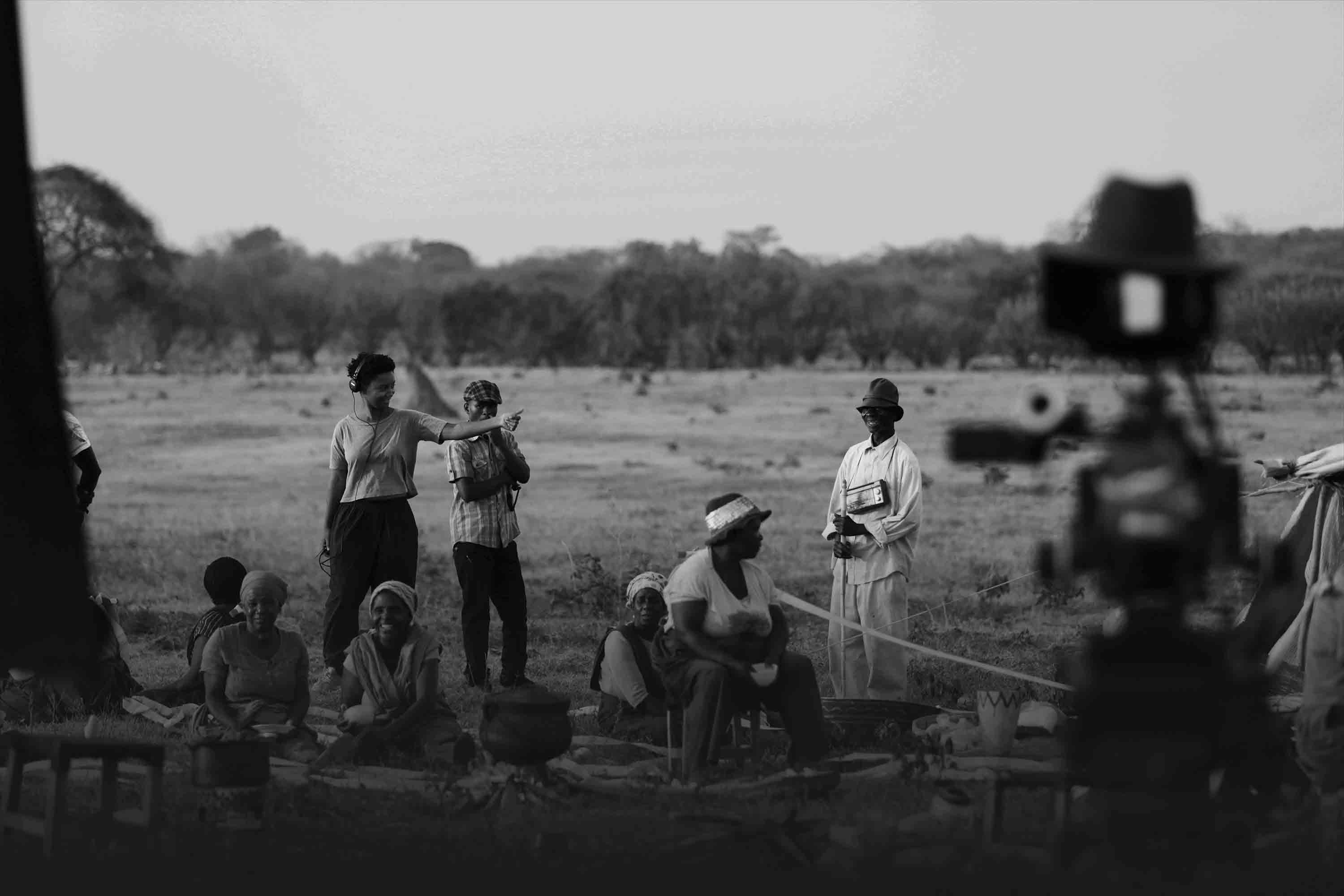I am a retired telecommunications engineer who earned a PhD in satellite communications engineering from the University of Surrey, UK. I worked in the telecommunications industry for over thirty years in Europe and Zambia.
Having lived in the heavily light-polluted cities of Europe, I highly appreciate Zambia’s pristine night skies, especially when viewed from dark rural sites. My astronomy epiphany occurred a few years ago, early one winter morning in the Lochinvar National Park.
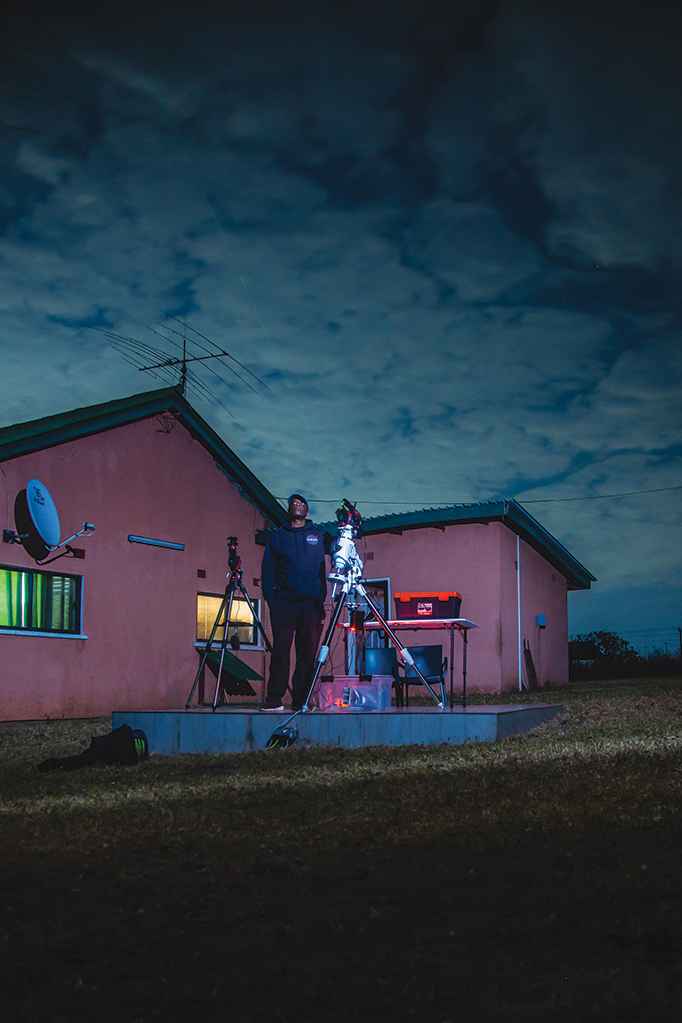
I had gone on a hunt with a few friends and emerged from my tent in the dead of night to “see a man about a dog”. As I happily went about my business, I noticed that the landscape was eerily well-lit as if a full moon was overhead, yet it was the new moon. I gazed toward the night sky, and my jaw dropped in utter disbelief.
An incredible Milky Way hung over my head, seemingly millions of stars forming a magnificent wide galactic swath from east to west. The intergalactic dust clouds in the Milky Way were clearly visible, and the stars shone so brightly, seemingly so close, that I felt I could grab a handful.
After what seemed like an eternity, I crept back into the tent and slept blissfully under African skies, ignoring my wet feet!
As we drove back to Lusaka the following day, I remember thinking I should try to photograph the night sky.
I thus fell into the astrophotography rabbit hole, from which I may never emerge, much like the black hole at the centre of our universe!
I started my astrophotography journey with a Canon 60Da astro-modified camera and primarily took Milky Way photos. I would drive 30km to 40km southwards on the Leopards Hill road, where the night sky is relatively dark on a new moon and managed to take some quite decent Milky Way photos.
I then graduated to using a sky tracker, which tracks the night sky as it rotates around the southern celestial pole, and the camera sits on top of it. This allowed me to take many long exposure photos (of the order of minutes in duration). This, coupled with taking multiple exposures and combining them using stacking software, took my astro-imaging to the next level.
I soon tired of being limited to Milky Way photography and wished to graduate to photographing what is termed deep-sky targets – such as nebulae and galaxies. The various Canon camera lenses I had been using would not suffice for high-quality deep sky photography, and I needed a proper telescope.
I opted to buy the Williams Optics Redcat-51 and a one-shot-color camera – the ASI294mc Pro. I also invested in a quality Sky Adventurer EQ6-Pro go-to equatorial mount and an ASIAir Pro computer to control the telescope, guide scope, electronic focuser, and mount. The photographs in this article were taken with this gear.
My current equipment setup is termed “Widefield” and is ideally suited to imaging large nebulae. I will need a much larger telescope with greater reach to image much smaller structures, such as galaxies.
I am largely self-taught and have learnt the hobby by watching countless YouTube video tutorials, purchasing many books and spending many hours under the night skies. Astrophotography is a technically demanding and challenging hobby that is ultimately most fulfilling and enlightening.
I take my astrophotography images at Kwisoko Game Ranch in the Lusaka East area most nights with clear skies. I hope you will be inspired to make your own journey into this fascinating pastime and grow to appreciate the beautiful skies above us and marvel at the glory of the heavens!
“Man must rise above the earth – to the top of the atmosphere and beyond – for only thus will he fully understand the world in which he lives”
Socrates, Philosopher.
My Astrophotography Equipment
- Williams Optics RedCat51 (250mm) telescope
- Skywatcher EQ6-R Pro equatorial mount
- ZWO 50mm guide scope
- ZWO ASI294mc Pro astro-imaging camera
- ZWO ASI120mm guide camera
- ZWO ASIAir Pro imaging control camera
- Optolong Filters – L-Pro, L-Extreme
- Processing Software – Pixinsight Ripley Version 1.8.9-1
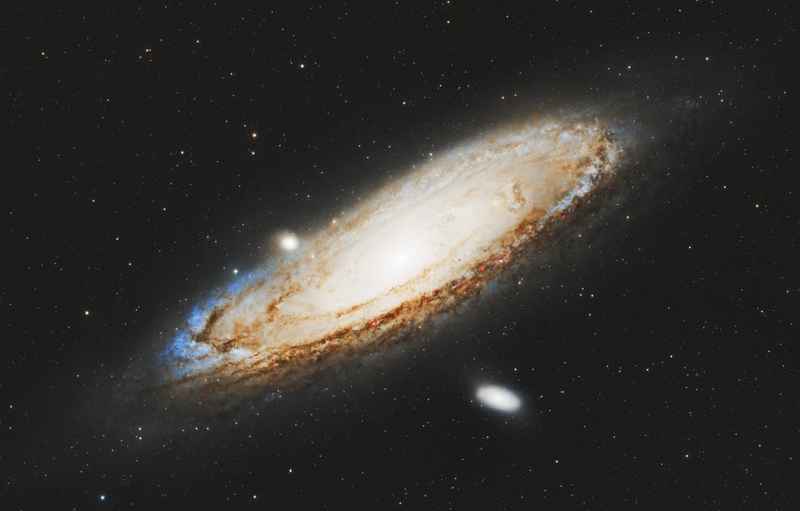
M31 – Andromeda Galaxy: The Andromeda galaxy is our nearest galactic neighbour at a distance of a mere 2.537 million light years. This barred spiral galaxy contains over 1 trillion stars and is approximately 10.01 billion years old. It can be viewed from a dark site with the naked eye as a fuzzy patch in Nov-Dec.
The Andromeda galaxy is hurtling towards us at 300km per second relative to the Sun and will collide with our local galaxy in approximately 5 billion years!
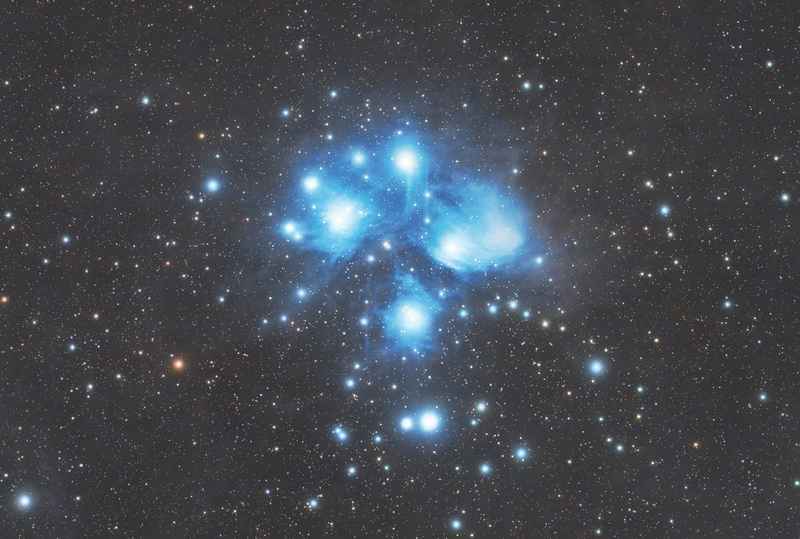
M45 – Seven Sisters: A prominent and easily viewed open star cluster asterism, the Seven Sisters – also known as the Pleiades – is a favourite of southern hemisphere stargazers. Greek mythology states that the Pleiades are the seven daughters of the Titan god Atlas and the ocean nymph Pleione.
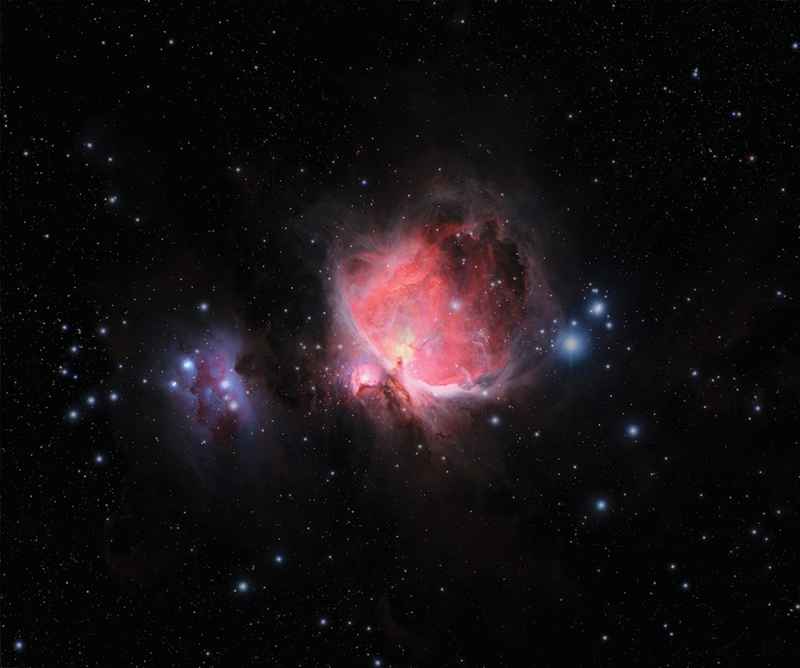
M42/Sh2-279 – Orion Nebula: The Orion Nebula and nearby Running Man Nebula are well-known nebulae in the Orion Constellation. M42 is an example of a stellar nursery where new stars are constantly being born. Observations have revealed approximately 700 stars in various stages of formation.
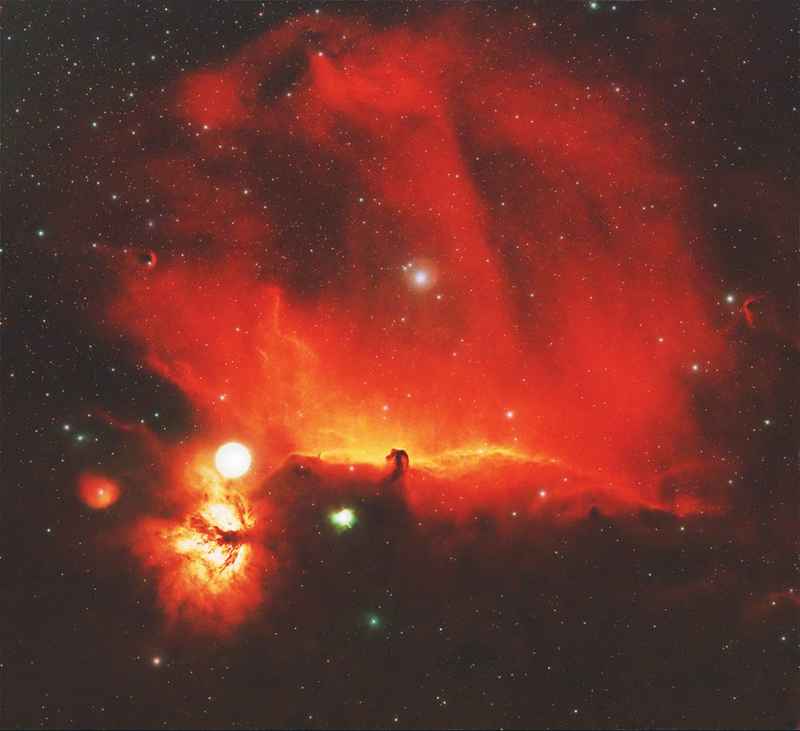
B33/NGC2024 – Horsehead & Flame Nebula: The Horsehead Nebula and its companion Flame Nebula are situated in the Orion Constellation, close to the bright star Alnitak. The horsehead-shaped Horsehead Nebula is a light-gobbling nebula made of cold gas and stellar dust. Alnitak shines into the Flame Nebula, and its energetic light knocks electrons from the great gas clouds of hydrogen gas, making the flame glow brightly.

M8/M20 – Lagoon & Trifid Nebula: The red Lagoon Nebula and its adjacent Trifid Nebula are located about 5,000 light-years away in the heart of our Milky Way Galaxy in the constellation Sagittarius. The Lagoon Nebula is a star-forming stellar nursery classified as an emission nebula. The Trifid Nebula is an unusual combination of reflection, emission and dark nebulae, giving it distinctive pink, red, blue and dark colourations.

M65/M66/NGC3628 – Leo Galaxy Triplet: The Leo Triplet is a group of three interacting spiral galaxies in the Leo Constellation at a distance of approximately 35 million light years. The trio offer different and exciting visual perspectives of galaxy orientation, from an edge-on-barrel view to various degrees of inclinations of spiral galaxies.
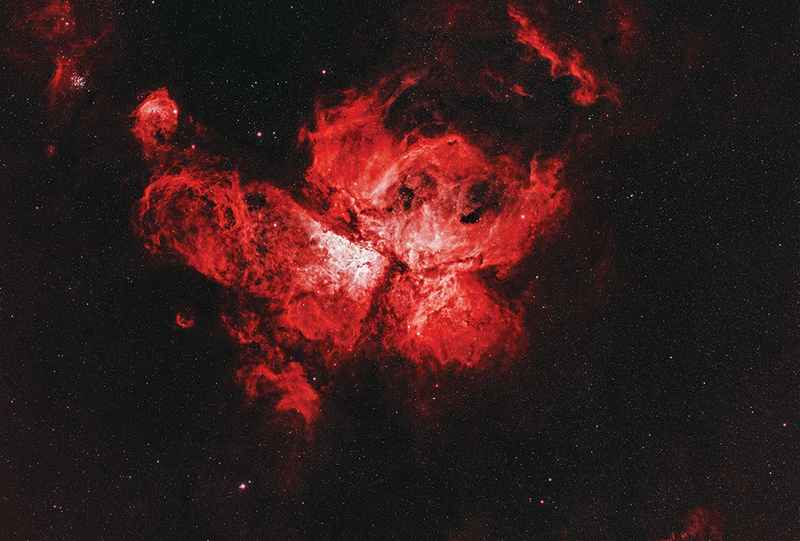
NGC3372 – Eta Carina Nebula: Eta Carina Nebula is a vast cloud of gas and dust with several massive and bright stars, including at least a dozen, which are 50 to 100 times the mass of our sun! The strong emissions from the stars ionise the gas cloud and cause it to glow brightly.
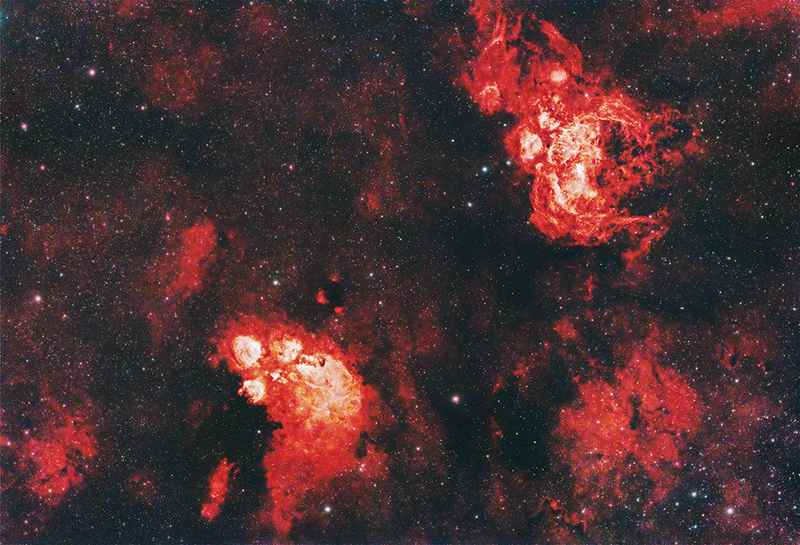
NGC6334 – Cat’s Paw Nebula: At the bottom left of this image, the Cat’s Paw Nebula looks like a celestial feline paw that has stepped in red paint and walked across the Milky Way. It lies about 5500 light-years away from Earth, is 50 light-years across, and is one of the most active star-forming nurses.
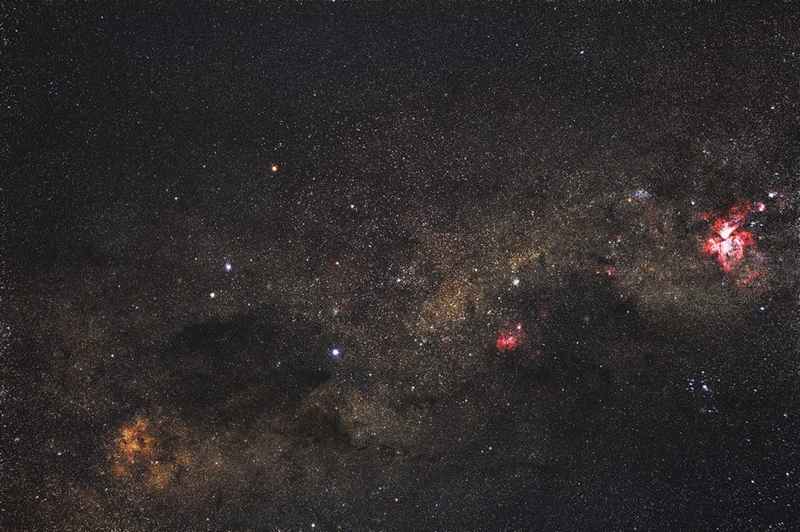
Southern Cross Region of the Milky Way: The easily identifiable, naked-eye asterism – the Southern Cross – is nestled in the heart of our Milky Way. This widefield image of this portion of the Milky Way reveals thousands of stars in a dense star field, with the prominent Southern Cross in the left part of the image. One can also easily identify other southern hemisphere gems in the image, including the Jewel Box, Coalsack Nebula, Lagoon and Trifid Nebula, and Eta Carina Nebula, on the extreme right.
Join Dr Mwanakatwe’s Facebook group if you’re interested in learning more about the cosmos and astrophotography: ZedAstro
Images by Dr Mupanga Mwanakatwe and Kalichi Pictures
